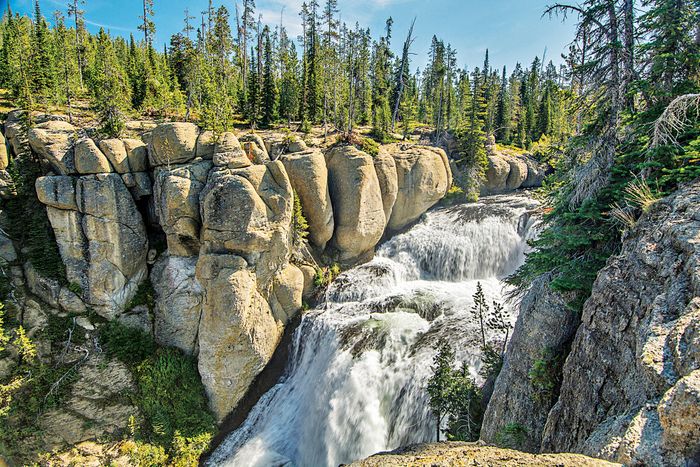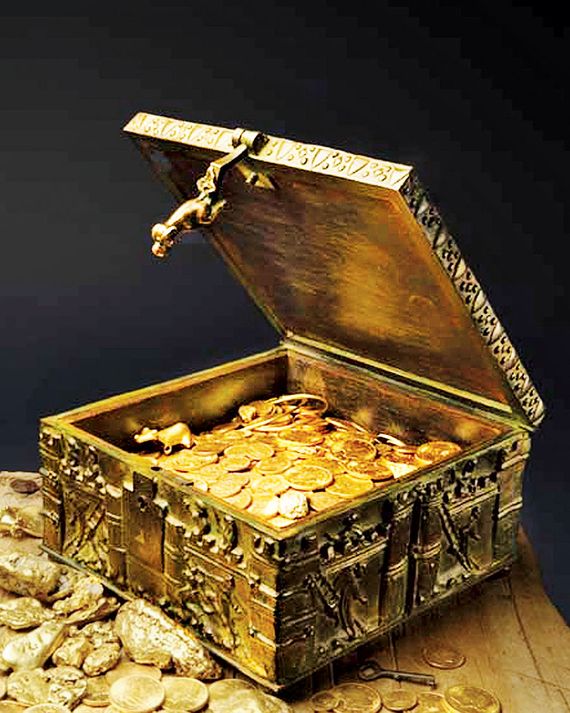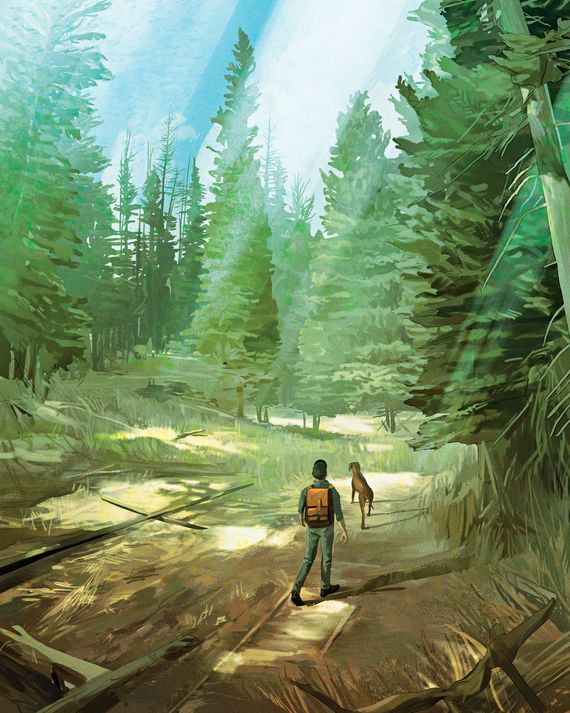
This article was featured in One Great Story, New York’s reading recommendation newsletter. Sign up here to get it nightly.
Growing up in Arizona in the 1990s, Justin Posey wanted to be Indiana Jones. At age 9, he started wearing the archaeologist-adventurer’s trademark khaki pants, Stetson, and leather jacket and carrying a bullwhip nearly every day. When other kids bullied him, his mother gently suggested he dress more normally. “He wouldn’t have any part of it,” his mother, Lorri, remembers. He carried the whip until he was 13. “I got pretty good with that thing,” he says. “Of course, they wouldn’t let me bring it to school.”
Posey’s parents were both railroad engineers, and during summers at the family’s cabin in Montana, where his grandfather was a fish-and-game warden, his favorite thing to do was get out in the hills with a metal detector. He collected books of magic and magicians’ biographies and devoted himself to demystifying illusions like levitation, sleight of hand, and escapes, which he performed in his sixth-grade talent show. He tore apart his mother’s new computer (and put it back together in the face of her fury) and built himself one from off-the-shelf parts. He had a book about the Spanish conquistadores and their long-buried treasure, and with his younger brothers, he recalls, he would “forge out on our own across the desert outside of Tucson in search of hidden loot.”
When Posey was 11, he became obsessed with the Victorio Peak treasure, a hoard of perhaps thousands of gold bars supposedly found by a hunter named Milton Noss in a hilltop cavern in New Mexico in 1937. Before Noss was able to recover most of the gold he had seen, the shaft leading to it caved in; after World War II, the U.S. government seized the whole area, adding it to the White Sands Missile Range. “This concept that there could be, around the corner, a vast fortune with an unimaginable historical context was just enthralling,” Posey says. He learned everything he could about it, even attending a summit held by descendants of Noss. He joined tours of the missile range, cooking up schemes to peel off from the group and sneak away to the treasure site. “That was the agonizing part,” he recalls. “I felt I could do this, but the physical barriers made it all the worse. It consumed the majority of my childhood.”
Years later, in 2012, when Posey was 29, his wife, Jennie, emailed him a Newsweek article about a different treasure. Hidden in “the mountains north of Santa Fe,” the treasure sounded almost fantastical — diamonds, rubies, and sapphires; gold coins, gold nuggets, a 17th-century Spanish ring. The key to finding the treasure lay in a 24-line poem in a self-published memoir, The Thrill of the Chase, by Forrest Fenn, the wealthy 82-year-old eccentric who had hidden it. Fenn, who estimated the treasure to be worth more than $1 million, said he hid it to motivate people to put down their digital devices and get out into nature. He was still alive and willing to engage with searchers. The hunt was free; the purse was big. The poem’s puzzle could theoretically be solved by anyone.
By then, Posey was living in Redmond, Washington. His childhood interest in puzzles and illusions had evolved into a fascination with ciphers and algorithms; he was now a computer scientist working on complex software problems for a tech giant. “I figured, How many times in a person’s lifetime are you going to be in a position to hunt for something you’re reasonably sure is actually there,” he says, “and the person who hid it is still alive?”
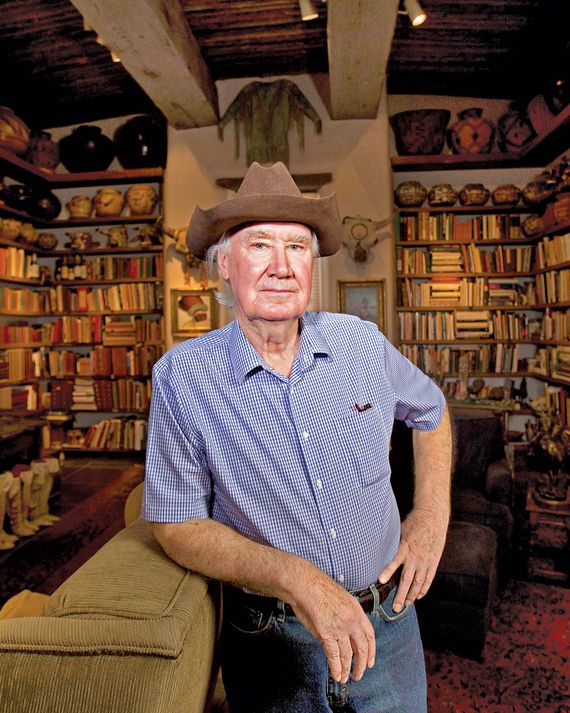
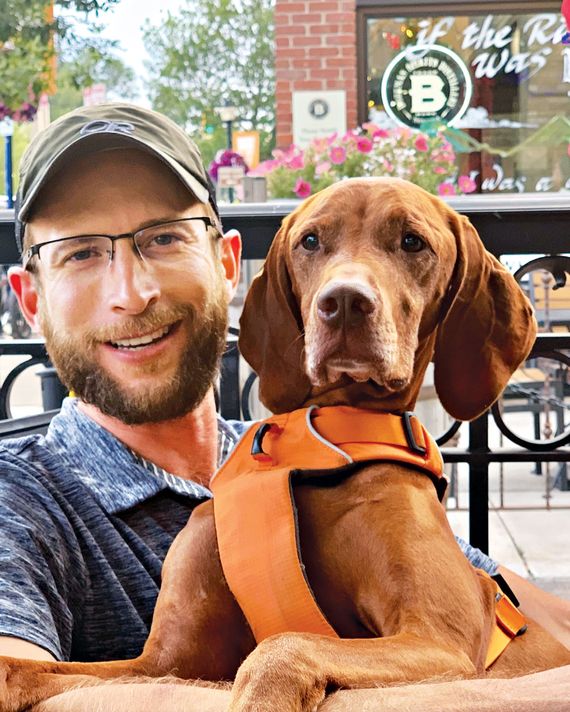
By the time the preteen Posey was getting interested in Victorio Peak, Fenn, then in his early 60s, was already a notorious figure in New Mexico. After a career as an Air Force pilot — in Vietnam, he said, he flew 328 combat missions and was shot down twice — he moved to Santa Fe and prospered as an art dealer trading in Native American artifacts and cowboy paintings. Fenn sold to people like Ralph Lauren, Suzanne Somers, and Michael Douglas. His gallery and the garden around it, which was patrolled by Fenn’s pet alligators, Beowulf and Elvis, became a popular stop on Santa Fe art tours.
Fenn’s bent for self-promotion and his populist attitude toward art chafed the town’s purists. In his Santa Fe home, he surrounded himself with relics, including what he said was Sitting Bull’s peace pipe and a flask of brandy that had belonged to Jackie Kennedy. At his gallery off Canyon Road, according to his memoir, he would invite visiting schoolkids to wash their hands and touch whatever they liked, including, on one occasion, Gilbert Stuart’s portrait of George Washington. “The teacher was horrified,” recalls Marc Howard, a Santa Fe jeweler who got to know Fenn in the 1990s.
Fenn took a roguish approach to life and to facts. “It doesn’t matter who you are; it only matters who they think you are,” he once said. Linda Durham, who interned with Fenn before going on to found her own contemporary-art gallery, recalls seeing an Egyptian sarcophagus displayed at Fenn Gallery with a sign that read DEACCESSIONED FROM THE BRITISH MUSEUM. She knew this to be a fiction. By sheer coincidence, the case had once belonged to her: A customer had given it to her when she was an Egyptology-interested Playboy Bunny. She’d had it X-rayed, and she knew it contained a mummified baby crocodile. After she sold it to a private collector, it eventually found its way to Fenn. When she pointed out that the British Museum story was false, he became angry. “He had no idea where that came from,” Durham says.
In the late 1980s, Fenn sold his gallery and bought the Pueblo San Lazaro, a National Historic Landmark south of Santa Fe, which he spent the next few decades personally excavating to the outrage of much of the New Mexico archaeological community. Fenn had little patience for archaeologists’ preoccupation with context — where an object was found and its position relative to the objects around it. The thing itself was, for him, everything. Over the years, he would have skirmishes with preservation groups, Native American communities, museums, and the federal government. (Eventually, as part of a massive investigation into the illegal antiquities trade, the FBI raided his house, but he was never indicted.) “Forrest was just a rascal,” says David Hurst Thomas, a senior curator at the American Museum of Natural History, “what you see in the Native American oral literature all the time about the trickster coyote.”
Objects were immortal to Fenn, and he was constantly hiding them. He would secrete an aspen leaf in a book and sign it so that in the future someone would find the leaf and smile. He cast a series of heavy bronze jars to contain his 20,000-word unpublished autobiography and buried them in the wilderness to await discovery by a stranger one or 1,000 years hence.
In 1988, he was diagnosed with kidney cancer. “He thought it was going to kill him,” recalls the author Douglas Preston, who lives in Santa Fe and became Fenn’s good friend. Fenn’s father, stricken with pancreatic cancer, had chosen to spare his family the agony of a drawn-out death and taken 50 sleeping pills, killing himself in his home. Fenn decided to do the same thing — but with a twist. He already had in mind a remote final resting place; he was going to go there with a bottle of pills and a chest full of treasure. He would write a puzzle poem and leave it behind, so that, as Preston says, “anyone who found the grave would be welcome to rob it.” Fenn began drafting the poem and assembling the trove.
Improbably, Fenn recovered from the cancer, but he decided to hide the treasure anyway, unaccompanied by his bones. Often, when Preston visited, Fenn would take him into his walk-in vault and show him the latest configuration of booty. “He took stuff out and put stuff in,” Preston remembers. “He was having a lot of fun thinking about what was going to be in that chest.” Early versions contained antique silver and gold watches and gemstones, including an amethyst, a topaz, and a star ruby. Fenn added a bunch of $1,000 bills. Then he removed them, realizing they would rot over time.
One of Fenn’s concerns was how he would know whether the treasure had been found, should that occur in his lifetime. He pondered various strategies, at one point including a document (a bearer bond or bank letter in an amount Preston recalls as $100,000) that a finder would need to present at a bank, triggering Fenn’s notification. Then Fenn removed that, too, figuring that banks might no longer be around to honor the obligation. He ended up putting something else in the chest, an unknown item he never revealed to anyone, which would somehow let him know when the treasure was discovered.
Preston wrote a thriller, The Codex, inspired by Fenn’s planned self-entombment, and Fenn continued to refine his poem. Preston recalls that, after reading a draft, “I said, ‘You know, Forrest, there are a lot of smart people in the world, smarter than you think. It would be a tragedy if you issued this poem and three days later the treasure was found.’ He said, ‘Don’t worry, I think it will take 900 years to find the treasure.’ ” When Preston visited Fenn in August 2010 and asked about the treasure, “he said to me, ‘It’s gone. I’ve hidden it. It’s done.’ And that was the beginning.”
The Sunlight Basin Solve
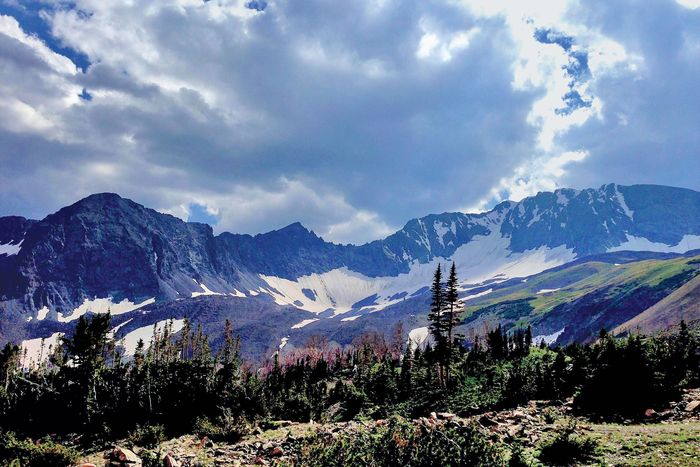
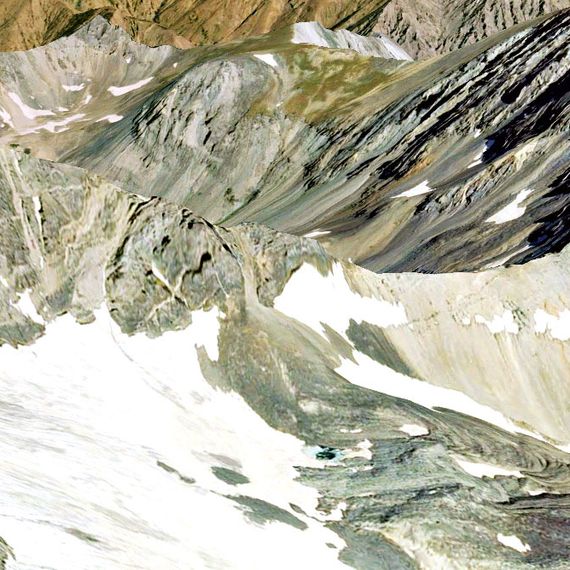
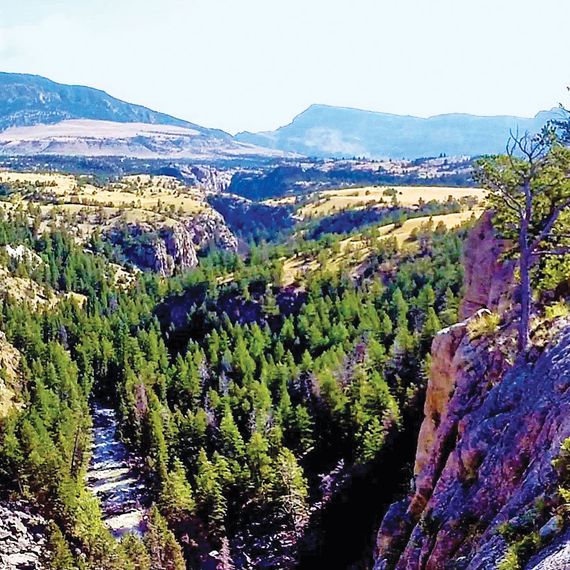
Within a few days of learning about the treasure, Justin Posey ordered a copy of Fenn’s memoir and devoured it. The search had officially been going on for two years but was only now beginning to draw media attention outside the region. The poem consists of six four-line stanzas. The second of these reads, “Begin it where warm waters halt / And take it in the canyon down, / Not far, but too far to walk. / Put in below the home of Brown.” It was so vague as to be almost endlessly interpretable — and that was if you thought the search area was limited to New Mexico, as many early searchers did. Posey thought the potential area was much larger, since “the mountains north of Santa Fe” could apply to the entire range of the Rockies. He felt the key to narrowing the universe of possible solutions lay in studying Fenn and the places that were special to him. In his memoir, Fenn revealed a strong sentimental attachment to Yellowstone National Park and the surrounding area, where he had spent many summer days as a youth fly-fishing on the Madison River. “Yellowstone — that’s where my heart is,” Fenn wrote. Posey thought he had a pretty good chance of solving the puzzle. “You read this thing, you say, ‘By golly, I know exactly where it’s at.’ ”
Begin it where warm waters halt: The Yellowstone area abounds with hydrothermal activity, and Posey soon homed in on Boiling River, where a hot spring flows into the Gardner River near the border of Wyoming and Montana. In one of his books, Fenn had described bathing in a similar body of water as a child and moving strategically around the river to warm up or cool off.
In June 2013, as soon as the Yellowstone season began, Posey and Jennie drove there from Washington State. They arrived just as trails were beginning to open. Even then, there was still snow on the ground. Posey quickly realized that Google Earth was no substitute for visiting a place. In satellite photos, “the canyons seemed more expansive, the rivers more foreboding, but that just wasn’t the reality,” he says. Boiling River wasn’t as grand or as intricate as he had expected; it seemed too simple.
Posey realized he would need to devote more time to the puzzle. Having made two two-week trips to Montana near the Wyoming border that first season, he searched for 60 days the following one. After Boiling River, Posey tried to stay “state agnostic.” He searched a wide variety of areas in Montana and Wyoming — and, for one season, in New Mexico. He spent almost no time in Colorado, which he felt had the lowest probability. “Mainly because Forrest has effectively never mentioned anything about it,” he told me. “A lot of people felt that was a clue right there, that he didn’t want to slip up, so he completely omits it. I felt that Forrest was more brazen than that.”
At each site, Posey tried to be as methodical as possible, mapping out a grid pattern to ensure he didn’t miss a spot. He usually hiked with a long-range drone; when he got back to his hotel room at night, he would pore over the footage for details he might have missed. Sometimes he would get to a new area and immediately know it wasn’t right: It just didn’t feel special enough for Fenn to have chosen it as the place he wanted to die. Posey returned to other areas again and again.
He was trying to think like Fenn, who had said a child would have an advantage in looking for the treasure. Posey thought this might mean, for instance, that a kid would be less afraid to wade through water. To encourage himself into streams and creeks, Posey stopped wearing Gore-Tex boots because they tended to fill with water and never dry out. He also wondered whether Fenn might have gotten around the American West’s daunting land-ownership patchwork by putting the treasure on real estate he owned, so he scoured online databases and county clerks’ offices for clues.
Jennie was supportive of, if less enthusiastic about, her husband’s obsession. She joined him on his hunts whenever she could. “We both agree: Our first search trip, to Boiling River, was the best vacation we’ve ever been on,” she says. She appreciated how the hunt led them to explore places most people never had a reason to visit and how having to thoroughly research where they were going enriched their trips.
In their home, a nook was dedicated to the display of a handsome leather-framed print of the map of Fenn’s search area, signed by Fenn. “We all knew he wanted there to be a little table under that with the treasure on it,” Posey’s friend Tyler Young says. “That was going to be the altar.” Many of the books on their coffee table were works obliquely referenced in Fenn’s books. To further prime his mind, Posey bought famously intricate Dindigul locks to pick and a 4,800-pound Graffunder Fortress gun safe to crack. The safe cost more than $20,000. “In retrospect,” he allows, “that purchase was a bit over the top.”
The Camp Loll Solve
The online Fenn treasure community, which emerged early in the search, exploded in size after the hunt was featured on the Today show in 2013. Posey kept his distance, lurking on the key blogs and forums but wary of getting sucked into the white noise of exuberant, fact-free theorizing. Still, he too fell prey to wild notions occasionally. At one point, he became interested in the 45th parallel — roughly halfway between the equator and the North Pole (hot and cold), and developed several “solves” along it. Whenever he went off the rails, he says, Jennie would gently nudge him back.
By August 2014, when Posey had been searching for more than a year, he had come up with a solve he was proud of: Sunlight Basin, a scenic, geologically forbidding area in northern Wyoming. For “warm waters,” Posey thought Sunlight Creek, a beloved fly-fishing destination, was suggestive; it “halt[ed]” where it emptied into Clarks Fork. “Take it in the canyon down” he took to refer to Sunlight Gorge, near the convergence of the creeks. The poem’s reference to the “home of Brown” had Posey stumped, but he was intrigued by the fact that the canyon passed Salinger Ranch; Fenn had written reverently of J. D. Salinger in his memoir. Then Jennie mentioned that Salinger’s publisher was Little, Brown. Posey had also discovered a tantalizing fact: The area was on a mining claim owned by an obscure LLC registered by an attorney in Cody who happened to sit on the advisory board of the Buffalo Bill Museum’s McCracken Research Library — alongside Fenn.
When Posey went to his solve site, it was one of the few places where reality lived up to theory: It was a spectacular valley ringed by craggy peaks. “There are a very few times I’ve had a high level of confidence,” Posey says. “At the end of the day, it’s kind of a sixth sense. You get to an area and say, ‘This feels like Forrest.’ ”
Nonetheless, after repeated visits, Posey still hadn’t found the treasure. Maybe trying to solve this on his own wasn’t the most fruitful approach, he reluctantly realized. Maybe it was going to take the community working together. Besides, it was the satisfaction of learning the solution, more than the treasure itself, that he wanted above all else. Logging in as “Extemporizer,” he posted his Sunlight Basin solve on a blog run by Dal Neitzel, a fellow searcher. Ten minutes later, he received an email from Fenn reminiscing about how he used to go fishing there with his friend George.
The treasure chasers had by now grown into a vibrant subculture. There were weekend-long meetups in Santa Fe (Fennboree), Yellowstone (Function in the Junction), and Las Vegas (World Series of Fenn). The searchers came from all over the world. They included high-school dropouts and Ph.D.’s; a California cannabis grower and a desert hermit who had lived in a cave for more than two years; David Klein, the inventor of Jelly Bellies; and John Wayne Bobbitt, the onetime tabloid castrato. Four years ago, Fenn estimated that 100,000 people had searched for his treasure; two years later, he claimed the number had grown to 350,000. He said he had received 13,000 emails, and 18 marriage proposals, from searchers. New Mexico’s tourism authorities credited the Fenn hunt, along with Breaking Bad, with driving a surge in visitors to the state.
Searchers ranged from the bored to the desperate, the retired to the bankrupt, the puzzle crackers to the goldbugs. Some of the most committed treasure hunters were fleeing a personal wound or grief. Posey, who readily calls himself “an eccentric, obsessive perfectionist,” took part in a scholarly study of the Fenn-chase community conducted by a psychologist at the University of North Dakota, who found that “the average chaser was shown to be normative in personality, mood regulation, and childhood development” but noted that 10 percent of respondents drawn from the online searcher community “described their involvement as a possible addiction.”
Searchers endlessly debated their solves of the poem and regaled one another with tales of adventure from boots-on-the-ground excursions. Michael O’Connell, a semi-retired cop from outside Boston with two master’s degrees, thought the 24 lines of the poem matched up neatly with a set of RV cabins in Yellowstone where Fenn and his family had spent a lot of time. Superimposing the poem over graph paper and removing all periods and apostrophes, he found that the two longest lines in the poem were 31 letters each, which led him to U.S. Forest Trail 31, near to those cabins. Another searcher, Sacha Dent, had a solve, inspired by the movie The Goonies, that relied on translating various words in the poem into Spanish. Fenn said that when the treasure was found and the location and solve were revealed, people would say, “My God! Why didn’t I think of that?” But this didn’t stanch the outlandish theories. A woman named Stephanie, who ran the forum ChaseChat, believed the treasure was actually in Fenn’s backyard in Santa Fe. (“My theory was you could be north of Santa Fe if you flew around the Earth,” she told me.) She published a book elaborating her theory that Fenn might be D. B. Cooper, and at one point, she found herself in the town of West Yellowstone, Montana, at 4 a.m., with the hydraulic wheelchair lift in her father’s truck, which she planned to use to pull up water grates from the street. (She didn’t end up going through with it.)
“You have to be mindful of the fact the human brain is great at making connections,” says a searcher named Matt DeMoss, who, as an editor at a seminary in Dallas, is versed in the subtle pitfalls of interpretation. “We see Orion’s belt in the stars. It’s easy to make connections that aren’t there. I’ll get five emails in one day, each pointing to five different places, but these people are all willing to die for their solve. I don’t know what else to compare it to but religious devotion.”
The gap between armchair solves and geographic reality meant that searchers encountered all kinds of trouble. Everyone had a story about a run-in with a snake, a bear, a mud bog, a geyser, elevation sickness, or some other peril. DeMoss emerged from the mountains around Gardiner, Montana, to find he was trespassing on the bunker-riddled property of the Church Universal and Triumphant, an apocalyptic religious group.
Sometimes the problems were more serious. A 34-year-old treasure seeker who got lost in Bandelier National Monument and had to spend a night with temperatures in the 30s sheltering near a large rock was saved by a rescue operation that included dog teams, the Los Alamos police and fire departments, New Mexico Search and Rescue, and three aircraft. An ex-cop from Seattle who made 17 trips to Yellowstone nearly drowned after his raft flipped over on the Lamar River.
To head off further disaster, Fenn began to issue occasional clarifying statements. After describing the search area as the Rocky Mountains, he further narrowed it by excluding Utah and Idaho. Observing that mines were full of poisonous snakes and black-widow spiders, he announced that the treasure was not in a mine. After some searchers seemed to be interpreting “home of Brown” to indicate an outhouse, Fenn explicitly ruled those out, too. “Don’t look any place where a 79- or 80-year-old man could not carry a 42-pound box,” Fenn said.
Part of the fun of the hunt, for many searchers, was engaging directly with Fenn. He would respond to emails. He regularly went into Collected Works, the Santa Fe bookstore that was the sole seller of his memoir (and sole recipient of its proceeds, as Fenn said he didn’t want to profit from it), to sign books and chat with searchers. He attended some of the larger meetups in Santa Fe. When Jenny Kile, a Pennsylvania woman who ran a treasure-hunting forum called Mysterious Writings, was driving through Santa Fe, Fenn invited her and her husband to explore San Lazaro. “I did find an arrowhead,” she recalls. “I’m sure Forrest planted that.”
While the search yielded cautionary tales about desperadoes burning through their life savings and divorcing over the treasure, it also sparked inspirational stories of dreamers brought together by it. Several couples met through the chase. When the California house of a searcher named Jamie Jourdan burned to the ground in a forest fire, the Fenn community held a raffle that raised $60,000, including a $10,000 match by Fenn, allowing Jourdan and her husband to move to New Mexico and put a down payment on a new home.
The community also came together when Randy Bilyeu, a 54-year-old retired mechanic who was searching for the treasure on the Rio Grande, disappeared in January 2016. His small dog, Leo, was found nine miles downstream from where Bilyeu had parked his car and entered the river on a child’s inflatable raft. After New Mexico state police suspended a search for Bilyeu, Fenn chartered a helicopter to continue it, and for a month, a dedicated group of Fenn chasers went out every day looking for Bilyeu. In July, skeletal human remains found near where he had disappeared were identified as his.
Meanwhile, Posey was developing a secret weapon. On a few occasions, Fenn had said that, based on emails he received, several searchers had come within 500 feet and at least one within 200 feet of the chest. Posey hated to think he could possibly get so close to the treasure and walk right past it. He had read about ore dogs, animals trained in Finland, Sweden, and Russia in the 1960s for use by geologists to detect mineral deposits. The dogs could supposedly sniff precious metals buried up to 40 feet underground.
Fenn’s treasure chest was made of bronze, and Posey had a 55-pound vizsla named Tucker who often accompanied him on his searches. During the off-season, he began conditioning Tucker to seek out bronze when he said either “Find it!” or “Where is it?” Eventually, even when Posey buried the bronze at considerable depths, Tucker was able to sniff it out. Now, if he was within 50 feet of the treasure, Tucker might key in on it.
By 2015, when he and Jennie moved to Austin, Posey had managed to go fully remote at his job. Later, he bought a Dodge RAM pickup truck and a large Airstream trailer to hitch to it. He equipped the truck with a rooftop tent and a diesel-powered heating unit so he could overnight in places inaccessible to the Airstream. He outfitted it with 40-inch tires, cellular-phone boosters, directional Wi-Fi antenna boosters, two-way satellite uplinks, generators, solar arrays — anything that would allow him to stay off the grid longer. He called his truck the Beast. Eventually he would add a personalized license plate that read TTOTC, short for “The Thrill of the Chase.”
He started spending roughly 120 days a year in the Rockies, driving from Texas in late spring and returning in early fall. To Posey, it was all worth it. He would be out hiking anyway; the treasure just gave his jaunts a focus. Back home, he spent the cold months coming up with new solves for the next search season.
He often talked things over with his friend Young, who had become something of a Fenn-chase obsessive himself. Several times a year, Posey and Young reread The Thrill of the Chase. They talked about how there must be some way to narrow down the search area. They wondered, off and on, whether latitude and longitude coordinates could somehow be encoded in the poem or book. Young, who worked in software-enabled language translation, speculated that the poem might contain homophones — sound-alike words — that could be clues. Posey had wondered the same thing. They played Mad Gab, a phonics game, to inspire their thinking. They made deals about what they would do if one of them, hunting alone, found the treasure (if it was a solve the other had contributed to, they would split it).
Every now and then, Fenn said something that felt like a clue. In one interview, when Fenn was asked about the possible legal complications of what he had done, he said, “What if there’s not a legal question?” To Posey, this suggested a hiding place with clear and stable ownership rights—not, say, Bureau of Land Management or National Forest Service land, which might be leased for logging. So he retained the top lawyer on land-use issues in each of the four states within the search area. To all of them, he presented the same hypothetical: Say he wanted to hide a large cache and get away with it — how would he go about doing that? The lawyers told him the best way would be to lease land, thereby avoiding a paper trail. But what if he needed it to outlive him? Then the best way would be to own the land, but the specific advice varied by state. Under New Mexico’s tax code, he was told he could designate a portion of his land as a family graveyard, sparing the estate from a continuing tax obligation. The last line in Fenn’s poem was “I give you title to the gold.” Was the mystery item in the chest a deed to the land it was on, thereby giving the finder ownership of the treasure? “What it illuminated,” Posey says of the exercise, “is there were a lot of places it could not be done.”
Posey got another idea from poker. Facial microexpressions can be tells, and he developed a machine-learning algorithm that could scan video for anomalies in pupil dilation, eye focus, and eyebrow movement. Then he fed it interviews and conversations with Fenn that were available online. He noticed that most of the aberrations the software picked up occurred when Fenn was talking about Wyoming. Posey redoubled his efforts there.
The Waterton Lake Solve
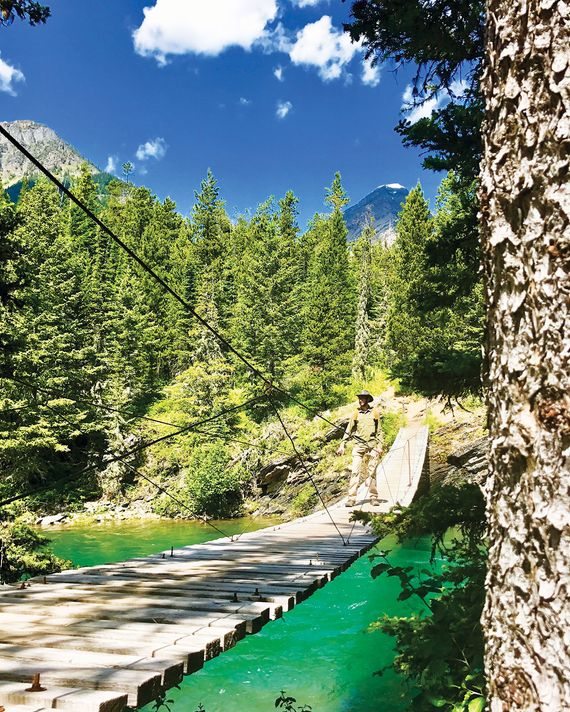
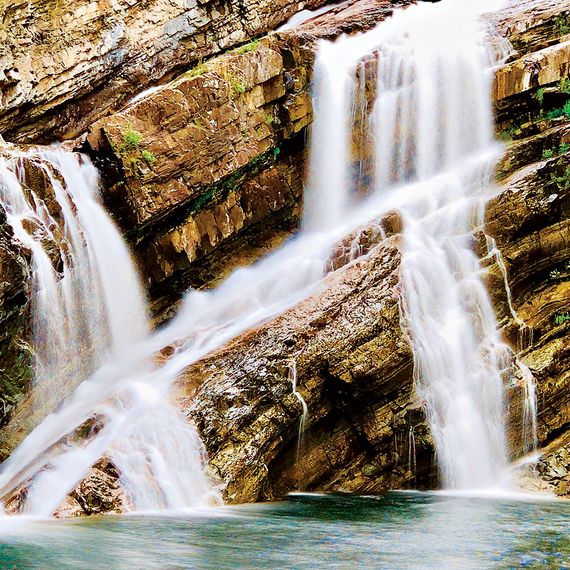
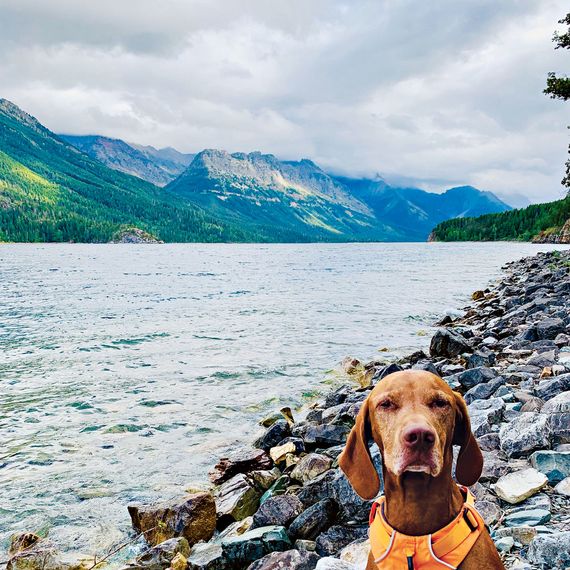
Posey knew not to make rookie mistakes like wearing headphones while searching, lest he miss the telltale rattle of a diamondback. But one time, Tucker did get pincushioned with quills after rolling around on a dead porcupine. And while hiking with Young near the Canadian border, Posey had a close call with a grizzly bear; he ended up smearing scat on the trail, which distracted the animal long enough for them to retreat.
Other searchers were less prepared. The year after Bilyeu died, a Fenn chaser went missing in Yellowstone, prompting another extensive search effort. The body of Jeff Murphy, a 53-year-old vice-president of the International Housewares Association in Illinois, was found at the bottom of a rocky slope, apparently having slipped and plummeted 500 feet. Five days later, Paris Wallace, a pastor from Colorado who was searching in New Mexico, was reported missing; his body was recovered in the Rio Grande Gorge, seven miles downstream from where he had parked his car.
A growing chorus of critics called for an end to Fenn’s treasure hunt. “Only one man has the power to stop the madness,” Bilyeu’s ex-wife, Linda, told the Associated Press. But Fenn, 86 at this point, was undeterred. He called Wallace’s death tragic and said he was thinking of ways to make the hunt safer, but he said the emails he received argued 100 to one for continuing the hunt. “If someone drowns in the swimming pool,” he told the New York Times, “we shouldn’t drain the pool, we should teach people to swim.”
Two weeks later, a raft carrying Eric Ashby, a young man who had moved to Colorado in 2016 to look for the Fenn treasure, flipped over on the Arkansas River in violent white water; an unrecognizable body found soon after was identified through DNA testing as his. Fenn posted another clue on Neitzel’s blog, saying the treasure was “not under water, nor is it near the Rio Grande River. It is not necessary to move large rocks or climb up or down a steep precipice, and it is not under a man-made object. Please remember that I was about 80 when I made two trips from my vehicle to where I hid the treasure.”
Fenn’s family suffered directly from the search. A Nevada man was arrested on suspicion of stalking Fenn’s granddaughter, reportedly claiming she was the real treasure. A Pennsylvania man who broke into Fenn’s property with an ax was held at gunpoint by Fenn and his daughter until police arrived. Fenn had to admonish one particularly zealous searcher who seemed convinced that the treasure was buried alongside his parents. “Please don’t dig up my parents’ graves,” he urged. He was also the target of an extortion attempt demanding he pay in bitcoin.
Then came the lawsuits. Last December, a Colorado searcher sued Fenn for $1.5 million in federal court in Albuquerque, claiming Fenn had defrauded him by giving misleading clues. A second litigant, a young Wharton graduate, filed an intervening motion attached to a baroque solution to Fenn’s puzzle, which he insisted was correct. His filing claimed that the solve location had only “virtual treasure, intentionally absent, with Fenn securing the real treasure.”
There was disharmony in the community as well. A growing number of posters on ChaseChat accused Fenn of orchestrating a hoax. A few female searchers claimed Fenn had dangled the promise of hints to get them to send him revealing photos. (He has denied this.) One forwarded me screenshots seeming to show an 88-year-old Fenn asking, “Are you spoken for?” and later, after she sent him a photo of herself in a bikini, commenting on the tattoos on her breasts. Searchers Kristie Thor and Mike Cowling started selling Fenn-themed items, including coins and a board game called Chase-opoly, as well as running an ad-supported YouTube channel. Fenn appeared troubled by the hunt’s commercialization: “I never intended for the chase to be an avenue for people to make money or start them on a new career,” he wrote to Thor and Cowling last year.
Fenn, at times, seemed sick of the whole thing. His wife of 66 years, Peggy, was very ill, and he too was feeling his age. More than once, he had Neitzel explicitly ask the community to stop emailing him. Then a fifth searcher died, apparently freezing to death near Dinosaur National Monument.
The search had taken a toll on Fenn’s family as well, but “we all supported my granddad fully,” his grandson Shiloh Old says. Beyond the problems that went along with it, “we within the family are all acutely aware of the major positive aspects of the treasure hunt.”
The Sinks Canyon Solve
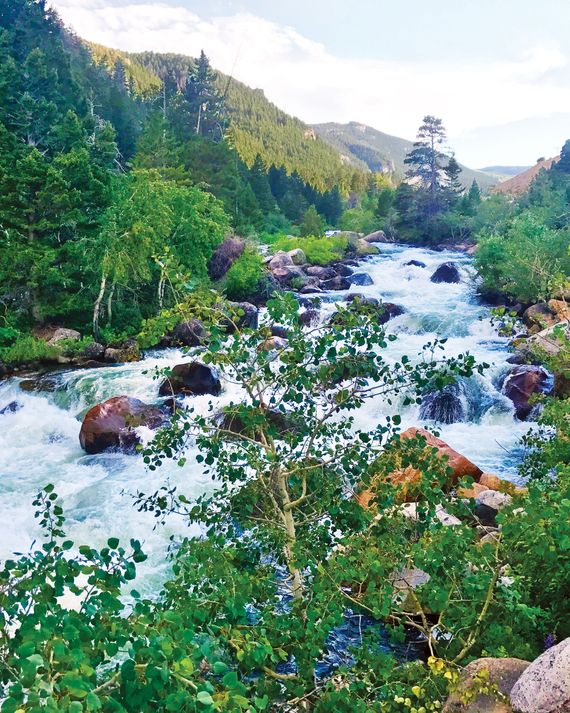
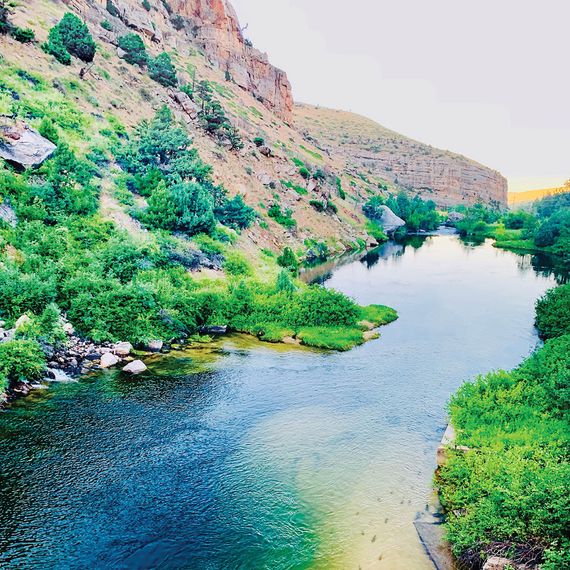
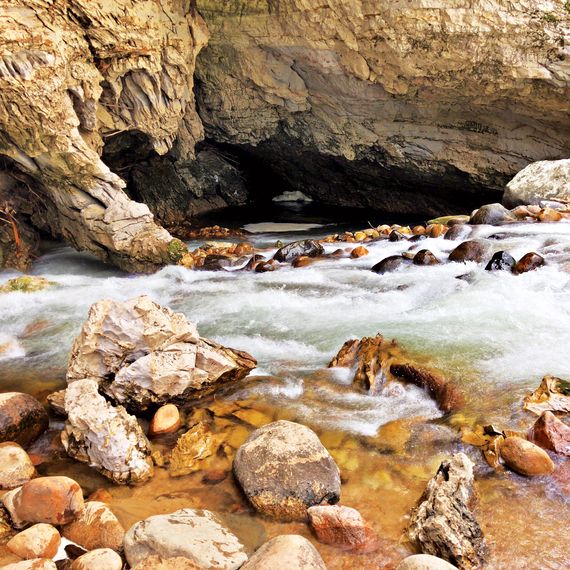
For Posey, the search had never really been about the treasure. He was well compensated in his career, and his plan, were he to find Fenn’s chest, was to either leave it where it was or re-hide it in a spot he had already picked out and create a new puzzle. The search, more than the million-dollar MacGuffin, was the thing that had meaning. It had led him to a stunningly beautiful fishing spot in Yellowstone, and motivated him to recover from hip surgery, and given him a way to bond with his father, who had been diagnosed with brain cancer. Posey cherished the time they had spent together debating the poem and mapping out search areas. “The cancer got the best of him,” Posey says, “but those days of planning and scheming brought us both immense joy.”
This year, Posey had a late start to his search season. On June 6, he and Jennie began driving from Austin to Montana. They stopped at an RV park near Amarillo for the night, and Jennie went into the office to pay. When she returned, her husband looked ashen. “Is everything okay?” she asked him. “What’s wrong?”
Posey was in shock. While she was inside, he had been deluged by texts and calls from the search community. Fenn had made a brief announcement on Neitzel’s site: “The treasure has been found.”
“I do not know the person who found it, but the poem in my book led him to the precise spot,” Fenn had written. “So the search is over. Look for more information and photos in the coming days.”
Posey felt like an athlete who was on his way to the Olympics, only to learn his sport no longer existed. “It was like someone confirming aliens had just landed on Earth,” he says. “I mean, sure, it’s possible — but likely?”
A few days later, Fenn provided Neitzel with a handful of photos to post: a close-up, apparently taken by the finder, of the opened chest on what appeared to be the forest floor, and a few pictures of Fenn himself in an office with the recovered treasure, wearing a Navajo turquoise bracelet taken from the chest. Fenn had met with the finder, he would later tell one searcher, to legally convey the chest to him, but he was chary with details.
The finder was a “shy” man “from back East” who didn’t want his identity or his solution revealed. “The finder wants me to remain silent,” Fenn said, “and I always said the finder gets to make those two calls. Who and where.”
Nonetheless, searchers who had spent years obsessing about the treasure felt the finder owed them answers — if not the location, then surely a couple of clues. When neither Fenn nor the finder provided any, the tribe of dot connectors and pattern recognizers began subjecting the scant photographic documentation of the discovery to relentless analysis. A Photoshop expert claimed to discern telltale seams in the images. A soil engineer argued that the root structure and humus in the soil cake suggested the chest had been buried. Amateur botanists believed that a twig resting on top of the open chest came from a cottonwood tree, some needles nearby from a lodgepole pine, and a leaf on the ground from an aspen. Posey found himself downloading forestation maps for the relevant species and overlaying them, looking for places where the three tree types converged.
Dark conspiracies began to congeal around the treasure’s discovery. According to one popular theory, there wasn’t a real finder — Fenn, approaching 90 and sick of the monster he had created, had simply decided to end the hunt and sent someone close to him to retrieve the chest. But a lot of people, including Posey, were willing to give Fenn the benefit of the doubt. Sure, he might embroider a tale, but he was obsessed with his legacy; having the treasure hunt end while he was still alive was the last thing he would want. “I think he was genuinely disappointed and a little crestfallen that the treasure was found,” Preston says. “He enjoyed the thought of going off into the unknown himself with the treasure unfound.” He says he even asked Fenn outright, “Did the finder actually solve the poem and follow the clues to the treasure?” According to Preston, he said “yes.”
With the community increasingly bitter and fractious, Fenn finally released another detail: The treasure was found in Wyoming. Some searchers were relieved they had never been near it; others were heartened they had gotten close. But this information inevitably fueled more skepticism: How convenient that Fenn, who was being sued by searchers in cases involving New Mexico and Colorado, had, in a stroke, removed both locations as possibilities.
The searchers who seemed best prepared to move on were those who had found the search for Fenn’s treasure worthwhile in and of itself. “He gave me the best eight years of my adult life,” said Cynthia Meachum, a searcher who had compared notes with Posey at the World Series of Fenn poker tournament in Las Vegas. “I met people I’d never have met; I drove roads I’d never have driven. It’s been such a hoot. I’ve made lifelong friendships.”
Meachum decided to put on one last event for searchers to gather and get some closure. “I wanted to get out of the funk I was in and have a party,” she said. “Be surrounded by chase friends.”
The Pahaska Solve
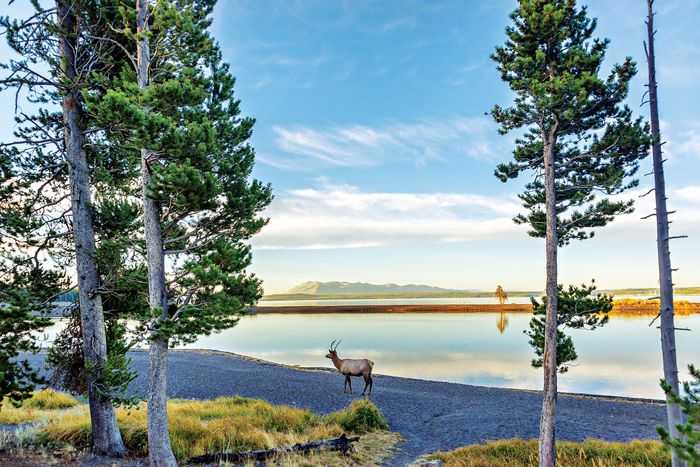
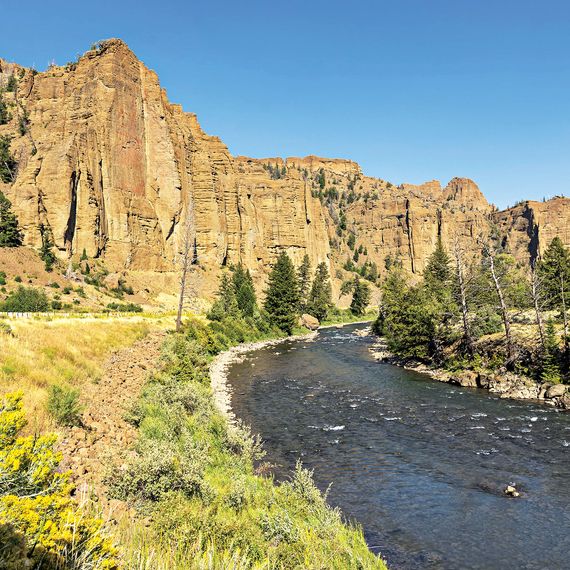
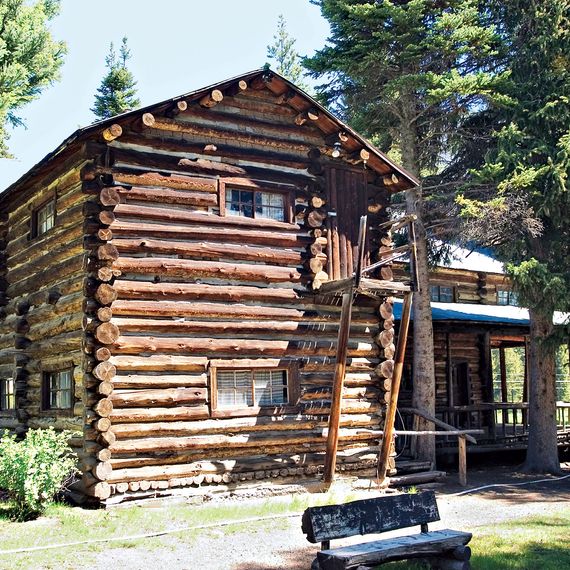
Friday evening on Labor Day weekend, the Forrest Fenn Finale, as Meachum was calling it, began on the patio behind Bullwinkle’s, a saloon in the town of West Yellowstone, at the southwestern corner of Montana. Some four dozen searchers were there, one or two of them intermittently wearing a mask. Many had become friends over the course of the hunt and were now online-poker buddies. Some knew each other only by their forum handles—GeyserGirl, Windsurfer, CopperDan — and were meeting in person for the first time. Kristie “Kpro” Thor was walking around taking smartphone video as she asked people questions such as “Do you think the finder is here among us?” Fenn, at home in Santa Fe, had offered to buy the first round of drinks.
“I met some of my best friends through this,” Dan Hedblom told me on the patio behind Bullwinkle’s. Hedblom, who is from Minnesota, had fallen out with his father over Donald Trump (Hedblom liked him, his dad didn’t), and they hadn’t spoken for two years. Then his father went into the hospital needing a triple bypass, and Hedblom went to see him. Afterward, he overnighted a copy of Fenn’s memoir to him, and they ended up hunting for the treasure together. Hedblom emailed Fenn, “Thank you for giving me my dad back.”
Like a lot of people at the event, Hedblom revered Fenn, but even he had doubts about how the whole thing had ended. “Some of us put Forrest up, like, here,” Hedblom said, holding his hand above his head. “And maybe we shouldn’t be doing this, ’cause, you know, what if this is a hoax? You ever hear of a guy named Lance Armstrong? Lance was my hero. If you’d argued with me about him, I’d have gotten in your face defending him …” He trailed off.
Early the next morning, searchers assembled at Fishing Bridge, a span across the Yellowstone River, to take a group photo at a place where Fenn had camped with his family as a child. The first to arrive was Meachum. During her Yellowstone trips over the years, she would sit on the bridge and email with Fenn as she looked out over the river. Posey arrived later, accompanied by Tucker, who sat at his feet, facing backward through his legs as if to guard his rear flank.
Posey nodded toward Meachum’s pickup, parked nearby. “You know, that plate looks awfully familiar,” he said with a smile. Her truck had New Mexico plates reading TTOTC; they had only recently learned that they had gotten identical vanity plates. “It’s fate,” Meachum said of her and Posey’s intersecting paths. “How did we not find that thing? I bet you were so close. I bet out of all — ”
“No, no,” Posey demurred. “I was probably a thousand miles away.”
“No, uh-uh,” Meachum said. “You couldn’t have been a thousand miles away. We were both in Wyoming. I mean, we had to be within a hundred miles of it.”
“We found a lot of places where it wasn’t,” Posey said.
“So, okay, let’s say it was found” somewhere near Sunlight Basin, Meachum said. “Would you be happy you were so close, or so bummed out that you were so close?”
“I’d be happy if I was never even close,” Posey said. “If I walked right over the top of it, I’d never forgive myself. Like, c’mon.”
“Oh, I’m so the opposite,” Meachum said. “I want to know that I was close but just too stupid to get the nine clues.”
Later that day, the Fenners gathered under an open-air pavilion in a park back in West Yellowstone. Letters from searchers who couldn’t make it to the event were read, as was a letter from Fenn. Awards were given out: Person Who Drove the Farthest to Get to the Finale (2,600 miles, from Orlando), Person Who’s Been “Arm-Chairing” the Search the Longest (eight years). Posey received awards for Most Boots-on-the-Ground Search Days (780) — accepting it, he joked that he was “the biggest loser” — and Most Consecutive Search Days (three months).
On Sunday morning, after a closing brunch, the searchers went their separate ways. Any hope that Fenn might shed more light on the lingering mysteries ended the next day, Monday, September 7, when his family found Fenn unconscious on the floor of his home. He died at about 5 p.m. that evening of natural causes, according to Santa Fe police. Fenn had said many times that the secret would die with him: It wasn’t written down anywhere.
The 45th Parallel Solve
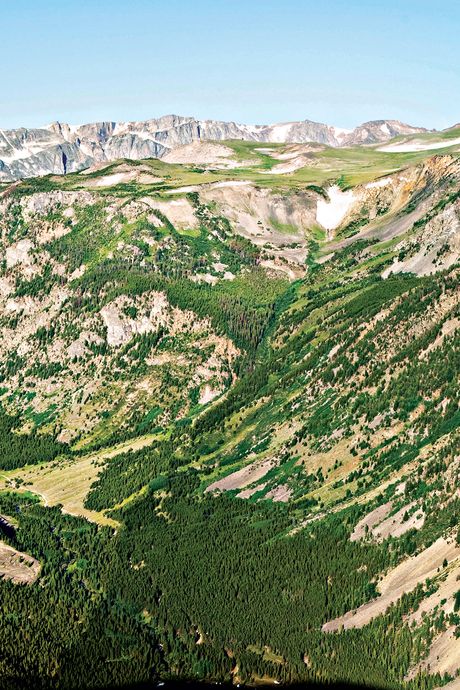
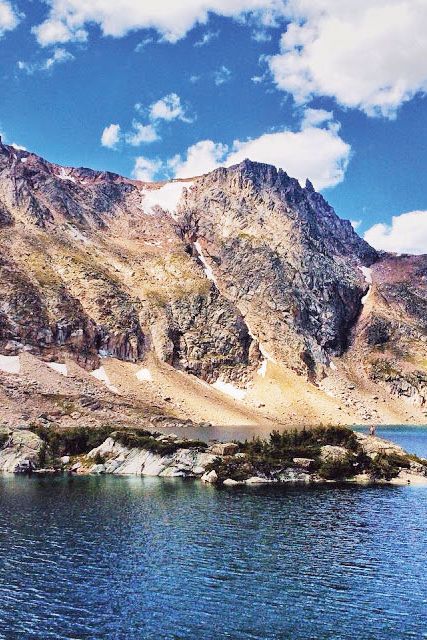
On September 23, someone writing as “The Finder” posted an essay on Medium. “I am the person who found Forrest’s famed treasure,” The Finder wrote, vaguely describing the arduous path that had led to the gold. “I figured out the location where he wished to die (and thus, where his treasure was), back in 2018, but it took me many months to figure out the exact spot … There were a few times when I, exhausted, covered in scratches and bites and sweat and pine pitch, and nearing the end of my day’s water supply, sat down on a downed tree and just cried alone in the woods in sheer frustration.” The Finder had spent 25 days at the location before finally uncovering the treasure in what he called a “nook.” He reverently described meeting Fenn in person in June and implied that he didn’t intend to reveal the location of Fenn’s special spot. He said he was a millennial with student loans who couldn’t afford to keep the treasure and would soon offer it for sale.
One fact made people take the Finder seriously: The essay was accompanied by photos of the chest and its contents, evidently outtakes from the same set of pictures Fenn had published on Neitzel’s blog. Also, the Fenn family posted a link to the article on its Old Santa Fe Trading Company website. Of course, this did nothing to debunk the widely held belief that Fenn’s family was somehow involved in a ruse. And there was a striking polish to the writing that prompted the usual rash of doubters, including suggestions that Doug Preston had written it. “The treasure was real, it has been found, and my wonderful grandfather has passed; we have the closure that we need,” Old, Fenn’s grandson, told me.
Posey thought the post was legitimate. In early October, he was at his family’s cabin in southwestern Montana, shutting it down for the year, when he got a text from Thor asking if he was still in the area. She and Meachum had an exciting development to tell him about. They were driving up through Utah, heading from Las Vegas to West Yellowstone to check out a GPS-based solution to the poem. It depended on deriving numbers from homophones (for = four; to = two) and word-within-a-word “kangaroos” (done = one) in Fenn’s poem to come up with a longitude and a latitude.
Curiosity got the better of him, so Posey drove with Tucker three and a half hours to West Yellowstone. At Bullwinkle’s that evening, Thor laid out an intriguing story: When Fenn had announced the discovery of the treasure back in June, her partner, Mike Cowling, had been contacted by someone who apparently knew who the Finder was. As proof, the source tipped Cowling off to the Medium post the week before it went up. Posey would later hear that the source had at one time belonged to a group of searchers who met online and collaborated on a possible homophone-based solve; supposedly, the Finder was one of a smaller team who eventually cracked the puzzle, and the source was evidently bitter about being excluded from sharing in the spoils.
Thor showed Posey photos the source had provided of the place where the treasure had supposedly been found. One was a shot of the area, a cathedral of soaring lodgepole pines, and the other two were of the place on the ground where he claimed the chest had been.
The next morning, a Monday, Posey, Thor, and Meachum drove into the park in Posey’s truck on what they were calling Operation Nook. They parked at DeLacy Creek picnic area, began a short hike along a nearby trail, then hopped over a small creek and walked through a meadow into a copse. “It’s the kind of area I’m always looking for,” Posey says. “Less than a mile to walk, no elevation, very simple, approachable. There’s a physical boundary, in the form of a water crossing — it’s simple but deters a lot of people — that lets you go from a populated area to a very private place quickly.”
The first day of searching, they were ill prepared and gave up after a few hours. That night, Posey began to have doubts that the solve was authentic. But he spoke to a friend in Austin, an applied mathematician, who pointed out the extraordinary unlikelihood that, out of the effectively infinite geographic coordinates in the world, a set of digits derived from number homophones in the order in which they appeared in the poem would yield a location that happened to be within Fenn’s search area.
The next day, the group returned to the site to search again. Several hours in, Thor walked up to Posey, wanting to show him a picture of an elk carcass she had just taken. As he moved toward her, he suddenly stopped and said, “Wait. Wait.”
A minute of silence passed as he studied the area around them.
“I found it,” he said. “It’s right here.”
Thor looked around. “I don’t see a downed pine.”
He pointed to the deteriorated remains of a tree on the ground.
She began to shout. “Fuck yeah, we found it!”
She radioed Meachum, who thought she was joking and said, “You’re so fucking full of shit.” Only when Posey got on the radio did Meachum realize Thor was serious. Meachum started running. When she reached them, she just stood there, filled with relief.
Posey began scrutinizing the ground for confirmation: pine cones, pine needles, deciduous leaves, twigs with specific shapes. “There was nothing that doesn’t line up with the original photo,” he says.
Under Yellowstone regulations, Posey wasn’t allowed to have Tucker with him, but Thor scooped some dirt into a plastic bag. When the group got back to where the truck was parked, she put it on the ground while Posey liberated Tucker. “Where is it?” Posey said. Tucker had been cooped up for a couple of hours and began running around sniffing. Then he came toward the dirt, gave it two sniffs, and immediately sat, tail wagging manically. Tucker looked up at Posey, expecting his reward. He smelled bronze. “That was a turning point for me, personally,” Posey says.
That night, the three had dinner at the Buffalo Bar in West Yellowstone. Posey had a folder on his phone full of Fenn’s quotes, and he pored over them looking for ways to confirm or disprove this location and make sense of his own failure to find it. He felt embarrassed. He had tried to derive geographic coordinates from the poem before, but he always made the mistake of starting at the top; to arrive at the correct coordinates, he would have had to start at the words begin it, in the second stanza, then wrap around to the top of the poem to get the last digit. He had hiked that same trail at least eight times. He had been in that meadow. He had been in that forest. But he was too far south. “In my estimation,” he says, “I was off by 600 feet. It’s maddening how close I was. Maddening.”
There were still discrepancies that didn’t make sense. The longitude they computed had brought them exactly to the longitude of the site that matched the source’s photo, but the latitude was 900 feet off. Posey realized that must have been why it took the Finder 25 days of searching to actually locate the treasure. The lack of precision nagged at Posey. But upon further analysis, it turned out that the final two, if read using a pilot’s standard decimal-minutes notation, would be .2, meaning 12 seconds, which put the solve location at the precise spot Posey found in the forest.
Thor and Cowling announced the solve to the chase community in a YouTube video titled FORREST FENN’S TREASURE LOCATION CONFIRMED!!!!! The community reacted with overwhelming negativity to the triumphal certainty of the headline and only slightly less so to the solve itself. Posey was more confident in this solve than in any others he had heard or thought of, but even he still had doubts. “I wasn’t totally comfortable with the five-exclamation-point announcement,” he says.
He also understood that if the coordinates solve was correct, decoding the poem’s imagery might be unnecessary, but many in the community wouldn’t countenance that possibility. Thousands of people had spent untold time parsing the signature phrases of Fenn’s poem. Dissertations, almost, had been written on strings of words like “where warm waters halt.” The possibility that none of it had ever mattered and that the only real meaning of the poem was a chain of digits concealed within it was almost an affront. If that were the case, it would mean Fenn had sat watching amusedly for ten years as everyone studied every square inch of his life and biography, when the key to the poem was, essentially, an advanced brain teaser.
Tyler Young drove up from Utah, arriving the next day, to join Posey on a return visit to the site. They studied the ground together, trying to line up knots in the wood with those in the photos the source had sent. Young had doubts. There were inconsistencies in the way the homophones worked. Fenn had on one occasion said that knowledge of “codes” or “ciphers” wouldn’t help someone solve the poem. (Preston, too, was left with the impression that Fenn’s puzzle was straightforward: “What he told me is: No anagrams, no number counting; the people doing that are all barking up the wrong tree.”) Also, was this place really special enough? “It’s beautiful, don’t get me wrong,” Young says, “but he said he wanted to die in this spot.” The only way to be sure this was the place would be some kind of forensic evidence or else the Finder’s coming forward.
The prospect of closure looks elusive. For all Posey’s talk of the search being more important than the find, his failure eats at him. For eight years, he spent the entirety of each summer looking for the treasure and all the other months planning to do so. “That was his reason to be,” says his friend Kim Saverno, who went on more than a dozen searches with him. “So when it was found, it’s ‘Now what do I do with my life?’ ”
If the chest comes to auction, Posey says he would feel compelled to bid on it. His plan would be to re-hide it. But he expects the chest to go for “significantly more than its appraised value,” so he spends his time thinking about a more realistic alternative. On one of his searches in Montana, Posey happened upon a fist-size rock that looked like a meteorite. It was pitted, had a metallic sheen, and was extremely dense. It was also magnetic. He sent the rock to a lab in New England to be tested. The lab confirmed its extraterrestrial origin and appraised it to be worth a substantial sum.
Posey hasn’t told anyone exactly where he found it, because there were a lot more of these rocks at the site, and he plans to retrieve them. He wants to hide them as part of the treasure hunt he has been thinking about starting. He has a spot in mind.


